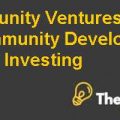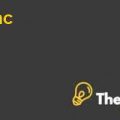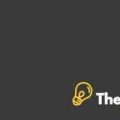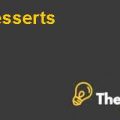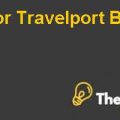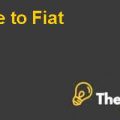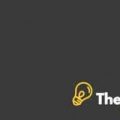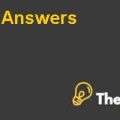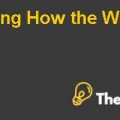
Question 1
What accounts for the unusual structure of this transaction? Specifically what explains
A) The co-investment of WEI with various government bodies in China versus outright ownership of WEI?
B) The investment by WEI of 40% of the total equity in return for 49% of the economic claim on cash flows?
Part A
There are some points that are based upon the unusual structure of the transaction which is comprised of the co-investment. Besides, the co-investment is the investment that is made directly into the company. This approach was adopted by WEI by entering into investment agreements with several government bodies that are located in China as well as the outright ownership of WEI. The representatives from WEI travelled to China in order to review some of the opportunities that were based upon the project.
There was an arrangement of the meetings with the provincial leaders, but there seemed to be unpredictable changes in the political leadership of China, which could have a drastic effect on moving towards investment in China. If the representatives of WEI had the ability to enter into a better deal in terms of making investment, then it would prove worthwhile for the shareholders of the company.
Part B
Moreover, as per the information available in the case, it can be seen that there was a claim made by WEI in return for an investment of almost 40% comprised of the total equity. Hence, they were demanding a 49% return over the investment they had made. On the other hand, this also takes into account the fact that the proportion of contribution that will be made by China’s government will be almost 60%. Hence, it will prove beneficial for WEI because they will have to make an investment of merely 40%. However,the claim that is made by WEI on the economic cash flows is unstructured in a way that they have invested at a lower rate and also China’s environment was having critical issues.
Question 2
What should be West more land’s required rate of return (ROR) against which to assess the attractiveness of the IRR to WEI? Explain in detail your method of estimating this required rate and any special adjustment you made for these facts: (1) West more land is located in the USA and (2) the project is located in China
As per the facts of the case, the rate of return that was evaluated earlier was almost 20% and that was not acceptable to the shareholders of WEI. In addition,Hampton was not satisfied with the board’s mandated IRR so as per the exhibits, the IRR has been recalculated. The initial expenditure of $540 million has been taken from the case and the profit before tax has been grown by the average inflation rate of 3.25%. The time period that is taken under consideration is starting from 1998 up to the fiscal year 2013.
Moreover, the income tax is assumed to be almost 15% and this has also been evaluated for a period of 15 years. The terminal or residual value has also been calculated by assuming a growth rate of 3.25%and then the depreciation is added back to the after-tax cash flows and the debt amortization is deducted. Hence, this procedure resulted in the total free cash flows and the fact that West more land is located in the US and the venture that they are trying to achieve is in China.
Despite this, by applying a discount factor of 14%, the net present value of almost $1,389 has been obtained whereas,the rate of return is almost 39%. The capital asset pricing model proved helpful in estimating the appropriate discount factor and by making use of that discount factor the rate of return of 39% is achieved that is greater than the previous rate of return evaluated i.e. 20%.
Question 3
Should Dorothy Hampton consider recommending a target ROR of 20% for this project? Why or Why not?
The rate of return is actually the interest rate and at this rate of return, the net present value of cash flows that may be both negative as well as positive based upon a particular venture. Hence, this will prove to be helpful in evaluating the attractiveness of the project to the shareholders who have made an investment in the venture.
Therefore, the shareholders will always need a higher return and by keeping this aspect in mind, it can be mentioned that Dorothy Hampton should not recommend a target rate of return of 20%. The reason behind this is that the owners of WEI will not be willing to achieve a lower rate of returns for the amount they have invested into the project.....................
This is just a sample partial case solution. Please place the order on the website to order your own originally done case solution.

